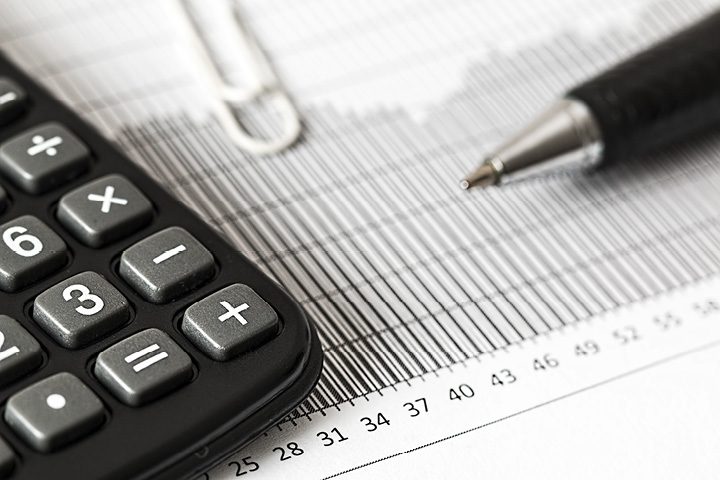Alison Pryde
- Director

Finance Secretary, Kate Forbes, presented the Scottish Government’s 2022-23 Scottish Budget on 9 December 2021.
This was the Scottish Government’s first Budget of the current Parliament and follows the UK Government’s Budget on 27 October 2021.
The Scottish income tax (SIT) announcements from the Scottish Budget were:
Land and Buildings Transaction Tax (LBTT) residential and non-residential rates and bands will be maintained at their current levels. The First-Time Buyer Relief which has the effect of increasing the residential nil rate band to £175,000 will continue to be available. Additional Dwelling Supplement will continue to be charged at 4%.
We’ll explain who will be affected by these changes, what it means in practice and the interaction of SIT with other UK wide taxes. Note: The tax raising powers relating to LBTT (the Scottish equivalent to SDLT) and SIT are devolved to the Scottish Government. Other taxes including capital gains tax (CGT), inheritance tax (IHT) and corporation tax continue to be reserved to Westminster.
From 6 April 2022 Scotland will have the following income tax thresholds and income tax bands:
| SIT Bands | Amount | Rate |
| Personal allowance | First £12,570 | Nil |
| Starter rate | £12,571 – £14,732 | 19% |
| Basic rate | £14,733 – £25,688 | 20% |
| Intermediate rate | £25,688 – £43,662 | 21% |
| Higher rate | £43,663 – £150,000 | 41% |
| Additional higher rate | Over £150,000 | 46% |
The UK Government confirmed in its Autumn Budget that the UK personal allowance for income tax would be frozen at £12,570 in 2022/23 and until 2025/26.
The Scottish Government has estimated that the introduction of these measures will result in 54% of Scottish taxpayers paying slightly less tax than their counterparts earning a similar salary in the rest of the UK.
The Scottish Government has also stated that no Scottish taxpayers will pay more Scottish income tax in the 2022/23 tax year than they did in the 2021/22 tax year on the same level of taxable income.
According to the Scottish Fiscal Commission, freezing the higher rate threshold at £43,662 rather than raising it in line with inflation will put 68,000 more people into the higher or top tax bands in the next year.
The impact of next year’s 1.25% increase in the rate of National Insurance will also need to be factored in when considering the impact on those whose earnings are charged to Scottish income tax.
The following table demonstrates how the changes to Scottish income tax will currently impact on a higher rate Scottish taxpayer in the 2022/23 tax year with taxable earnings of £60,000 when compared to a taxpayer resident in another part of the UK (based on the rest of the UK rates and thresholds for the 2022/23 tax year).
| Income tax rate bands | Scottish Taxpayer (2022/23) | Taxpayer in rest of UK (2022/23) | ||
| £ | £ | |||
| Personal allowance | £0 – £12,570 | 0 | £0 – £12,570 | 0 |
| Starter (19%) | £12,571 – £14,732 | 411 | N/A | |
| Basic (20%) | £14,733 – £25,688 | 2,191 | £12,570 – £50,270 | 7,540 |
| Intermediate (21%) | £25,689 – £43,662 | 3,774 | N/A | |
| Higher (41%) | £43,663 – £60,000 | 6,698 | £50,271 – £60,000 | 3,891 |
| Total | 13,074 | 11,431 | ||
A Scottish taxpayer with earnings of £60,000 will therefore pay £1,643 more income tax than their counterparts in the rest of the UK. This tax gap will only widen for Scottish higher rate taxpayers as their earnings increase.
What is Scottish income tax?
The SIT is a power which the Scottish Parliament has to set the thresholds and rates of income tax for Scottish taxpayers and therefore the amount that the Scottish Government has to spend. The Scottish Government has estimated that SIT receipts in Scotland will increase to £13,671 million in the 2022/23 tax year.
The SIT applies to the earnings of Scottish taxpayers arising from employment (e.g. salaries, bonuses, etc.), self-employment (e.g. sole-trader and partnership profits), pension income and income from property (e.g. rent). The UK thresholds and rates of income tax continue to apply to savings income (e.g. interest, dividends, etc.).
The UK Parliament retains control of all other aspects of the income tax regime, including setting the level of the personal income tax allowance and introducing and altering available income tax reliefs, such as those applicable to gift aid donations to charity and pension contributions. Scottish taxpayers therefore benefit, for example, from any increase in the income tax personal allowance announced at the UK Budget.
To find out more about Scottish income tax including:
Our Private Client team offer a full portfolio of advisory services in wealth management, private property and family advice. It is a full-service solution that is always tailored to meet individual and family needs.
You might also be interested in these articles: